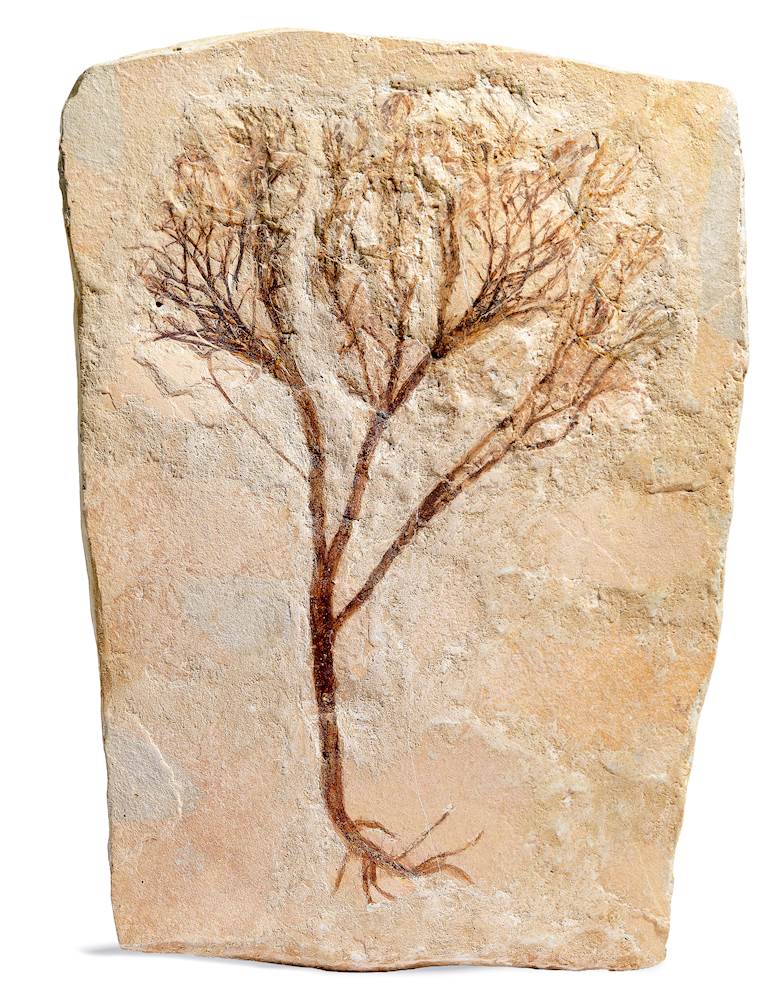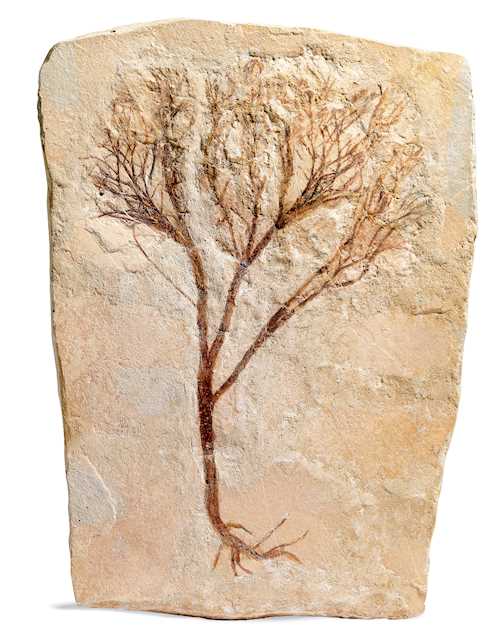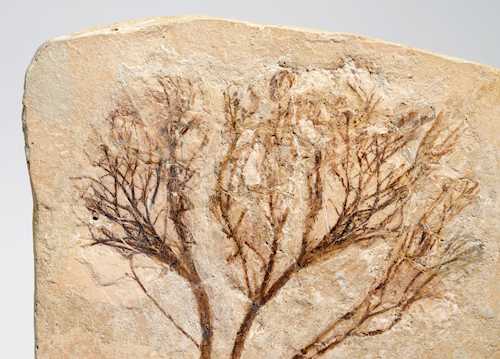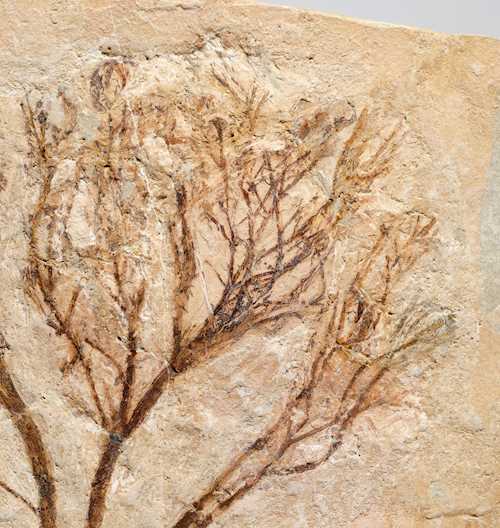
拍品 4002* - A211 Out of This World - Dienstag, 03. Dezember 2024, 05.00 PM
FOSSILISED PLANT
Maffeia ceratophylloides
Middle Eocene, 50 million years
Monte Bolca, Italy
35 × 26 × 4 cm
Middle Eocene, 50 million years
Monte Bolca, Italy
35 × 26 × 4 cm
Provenance: Private collection of the Cerato family
Monte Bolca is a famous fossil discovery site located near Verona in Italy. Or as the locals call it: ‘Pescaria’, derived from Pessàra, which means fish pit or fishbowl in the local dialect. As this site has unearthed some of the most important fossil fish finds known to science, it is a very appropriate name.
This region consists of sequences of layers, which started to develop during the beginning of the Lower Cretaceous around 145 million years ago, to the end of the Oligocene around 35 million years ago. An isolated block of stratified limestone about 20 metres deep and several hundred square metres in size lays surrounded by loose volcanic rock and criss-crossed by underground passages.
The first targeted search for fossils began as early as the 18th century. This gave rise to the first natural history collections to ever exist. One of these was the collection of Veronese apothecary Francesco Calceolari, founded in 1571. Over the years, a great diversity of fishes – over 300 species – were discovered, of great importance for our knowledge of the evolution of modern fishes.
The Pesciara has not only yielded fish but also some astonishing and quite rare plants. Among the finds are both marine and freshwater plants, as well as plants from the mainland. They include Maffeia ceratophylloides, a freshwater plant that was most probably transported by rivers. Its modern-day relatives still grow in large rivers in South America.
The specimen presented here is in excellent condition and beautifully detailed. It comes from the private collection of the Cerato family, who has owned the local quarries for over five generations.
Monte Bolca is a famous fossil discovery site located near Verona in Italy. Or as the locals call it: ‘Pescaria’, derived from Pessàra, which means fish pit or fishbowl in the local dialect. As this site has unearthed some of the most important fossil fish finds known to science, it is a very appropriate name.
This region consists of sequences of layers, which started to develop during the beginning of the Lower Cretaceous around 145 million years ago, to the end of the Oligocene around 35 million years ago. An isolated block of stratified limestone about 20 metres deep and several hundred square metres in size lays surrounded by loose volcanic rock and criss-crossed by underground passages.
The first targeted search for fossils began as early as the 18th century. This gave rise to the first natural history collections to ever exist. One of these was the collection of Veronese apothecary Francesco Calceolari, founded in 1571. Over the years, a great diversity of fishes – over 300 species – were discovered, of great importance for our knowledge of the evolution of modern fishes.
The Pesciara has not only yielded fish but also some astonishing and quite rare plants. Among the finds are both marine and freshwater plants, as well as plants from the mainland. They include Maffeia ceratophylloides, a freshwater plant that was most probably transported by rivers. Its modern-day relatives still grow in large rivers in South America.
The specimen presented here is in excellent condition and beautifully detailed. It comes from the private collection of the Cerato family, who has owned the local quarries for over five generations.
CHF 6 000 / 8 000 | (€ 6 190 / 8 250)






